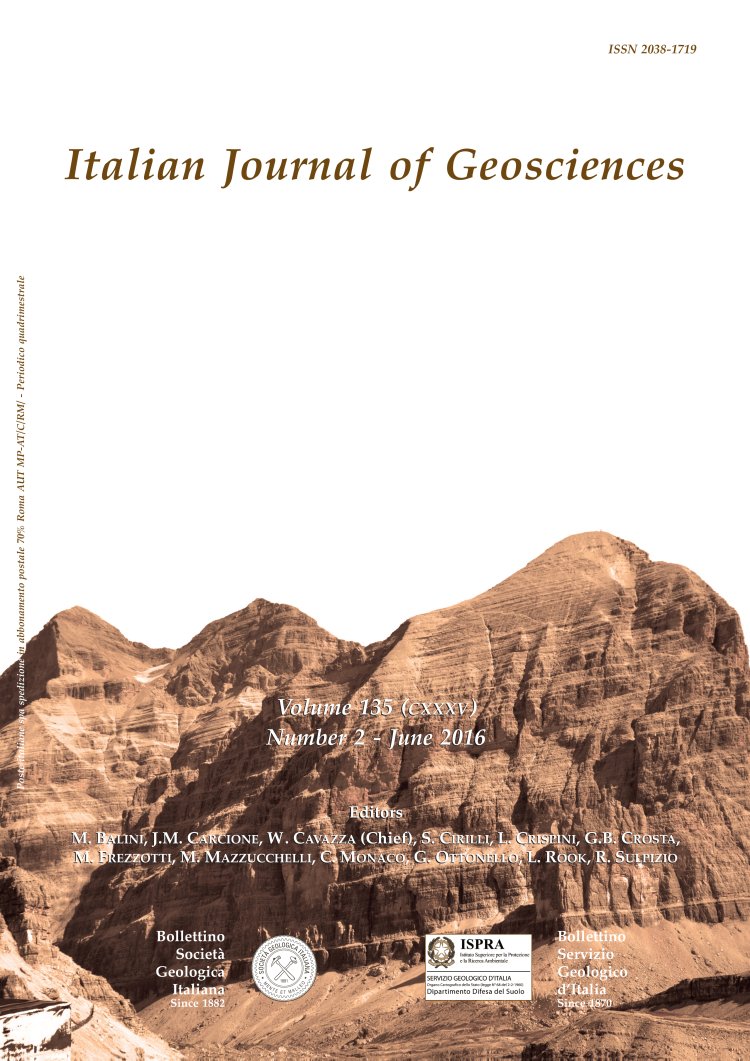
The first geological map: an Italian legacy
Marco Romano (*), (**), Richard L. Cifelli (**) & Gian Battista Vai (***)
(*) Dipartimento di Scienze della Terra, Sapienza, Università di Roma, P.le A. Moro 5 - 00185 Roma, Italy. Corresponding author e-mail: marco.romano@uniroma1.it
(**) Sam Noble Museum, 2401 Chautauqua Ave., Norman, OK 73072, USA.
(***) Dipartimento BiGeA, Museo Geologico Giovanni Capellini, Università di Bologna, via Zamboni, 63-67 - I-40126 Bologna, Italy.
Volume: 135 (2016) f.2
Pages: 261-267
Abstract
Although the popular map by William Smith "A Delineation of the Strata of England and Wales with Part of Scotland" is properly celebrated as the first complete geological map of an entire country, the basic principles used by the famous English canal surveyor were epistemologically founded and utilized by the Italian Count Luigi Ferdinando Marsili about a century earlier. Marsili, "uomo d'arme e scienza" ("man of army and science"), represents a vitally important pioneer in the fields of geography, cartography, and oceanography, with fartherranging knowledge that included, for example, the field of archaeological survey. With his geologic map of the Cesenate sulphur mines Marsili was the first geologist to make the quantum leap from simple mineralogical maps – which report the location and access of mines on a topographic background – to a proto-geological map, wherein the areas represented by corresponding lithostratigraphic units are delimited. If Smith's map is rightly regarded as an ambitious work for the areal extent covered, Marsili's "Treatise on the Structure of the Earthy Globe" (lamentably unfinished) was by far more ambitious.
The 200 sheets that come down to us include about 50 pen drawings and more than 35 water-colored plates. These clearly show how the work of Marsili took radical departure from the classic systems or "Theories of the Earth" espoused by British contemporaries such as Burnet and Woodward: in the Italian scientist we find the first arguments on the mountain roots and the observations that, much later, led to the principle of isostasy. In the fields of stratigraphy, regional geology, oceanography, and geological mapping, Marsili anticipated scholarly thought by at least a century.
The 200 sheets that come down to us include about 50 pen drawings and more than 35 water-colored plates. These clearly show how the work of Marsili took radical departure from the classic systems or "Theories of the Earth" espoused by British contemporaries such as Burnet and Woodward: in the Italian scientist we find the first arguments on the mountain roots and the observations that, much later, led to the principle of isostasy. In the fields of stratigraphy, regional geology, oceanography, and geological mapping, Marsili anticipated scholarly thought by at least a century.
Keywords
Get Full Text